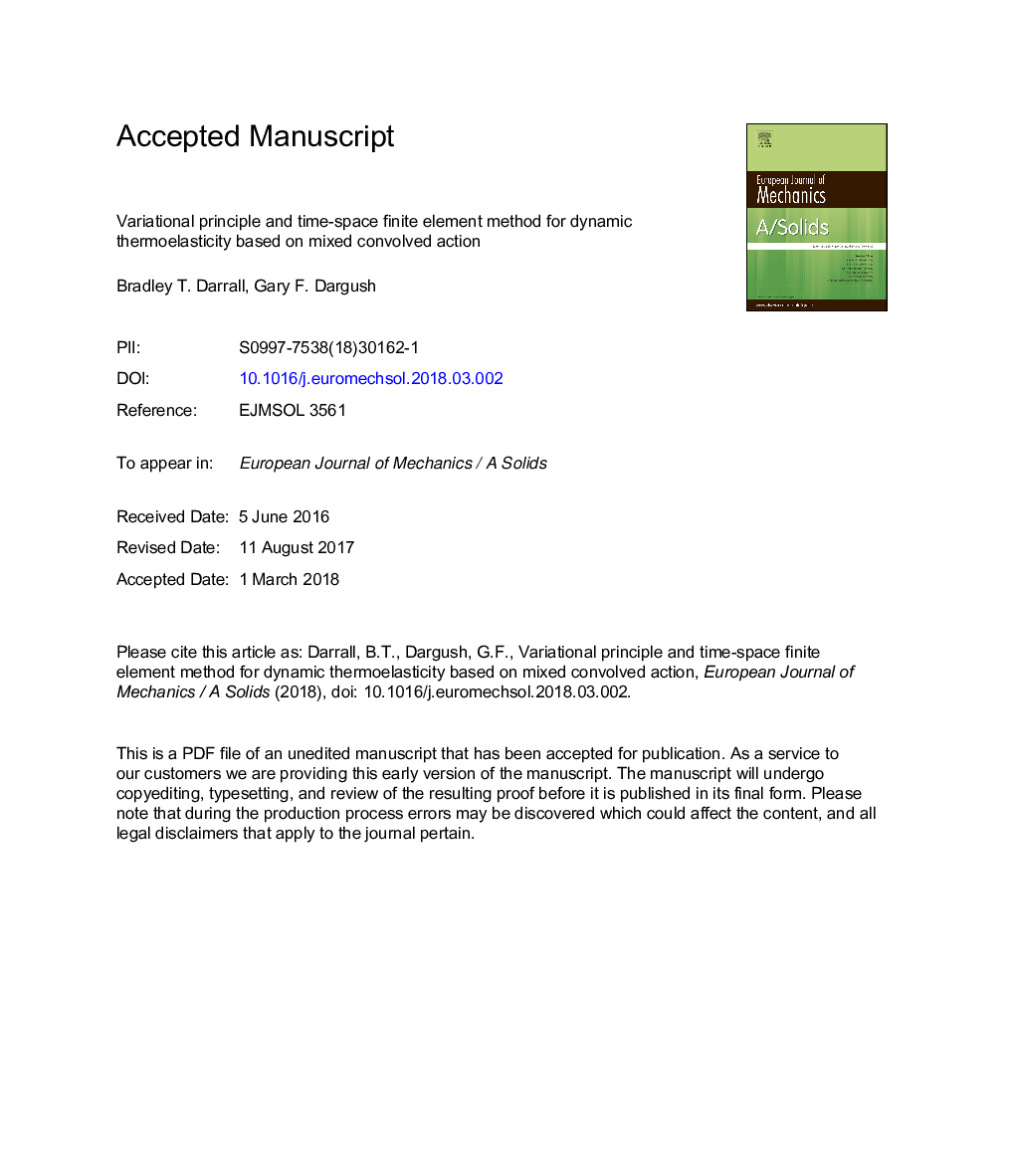| Article ID | Journal | Published Year | Pages | File Type |
|---|---|---|---|---|
| 7170159 | European Journal of Mechanics - A/Solids | 2018 | 53 Pages |
Abstract
A new variational formulation is proposed for time-domain analysis of initial/boundary value problems of dynamic thermoelasticity. By using the concept of mixed convolved action, the difficulties with dissipative phenomena and proper representations of the temporal end point conditions can be overcome to create a true stationary variational principle. After an elementary illustrative development for a lumped parameter thermoelastic model, the convolved action functional for linear thermoelastic continuum is written directly in terms of mixed variables, which include displacements and the impulses of stress, temperature and heat flux. Unlike previous variational approaches, based for example upon a generalization of Hamilton's principle, the present mixed convolved action formulation allows direct application of finite element methodology in both space and time. Here, simple linear shape functions are employed for the temporal representations. Meanwhile, standard three-noded triangular elements are used in the present two-dimensional numerical implementation. Several computational examples are considered to test this original approach and to investigate interesting aspects of coupled dynamic thermoelastic response.
Keywords
Related Topics
Physical Sciences and Engineering
Engineering
Mechanical Engineering
Authors
Bradley T. Darrall, Gary F. Dargush,
